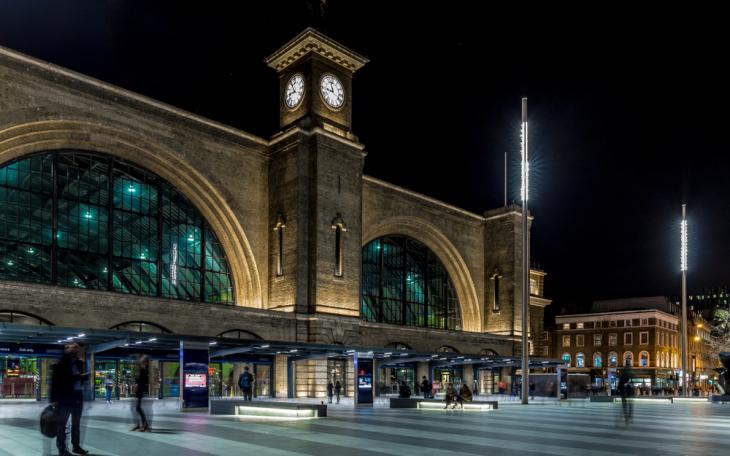Property & Places: King’s Cross

The transformation of King’s Cross is an example of urban regeneration at its best. Having lived in north London almost all my life, King’s Cross has always been an important landmark but is now one of my favourite places in the city to shop, eat, or meet with friends.
Once the industrial heart of Victorian London, King’s Cross fell into decline after World War II and, by the late 1900s, the railway lands had become a series of disused buildings, abandoned railway sidings and contaminated land.
In the 1990s, King’s Cross became the centre of an underground clubbing scene. At the height of its popularity, some 10,000 party-goers would descend on the area’s iconic nightclubs each night. But by the early 2000s, the days of King’s Cross as a cultural epicentre were long gone, and it was in desperate need of some TLC.
With the regeneration programme underway in 2007, the first building and public space opened in October 2011. In total, the development comprises 67 acres, 4,250,000 sq ft of office space, 8,000,000 sq ft of mixed-use space, 20 new streets, and nearly 1,700 new homes.
Today, this formerly grimy part of London has become a neighbourhood, in the truest sense of the word. There are new streets, new parks and new public spaces. Glamorous residential buildings have appeared, along with shops, offices, galleries, bars, restaurants, schools, and a university.
But despite all this newness, King’s Cross retains its character, and the regeneration programme has created an area where people want to spend time. Many of the King’s Cross eateries have outdoor terraces so that in the summer the area feels decidedly European. Coal Drop’s Yard, with its cobbled streets and restored brick arches, has charm whilst also being great for shopping.
The new parks are beautiful and thoughtfully created – a far cry from the stretches of grass so often billed as green space. Reminiscent of New York’s High Line, Bagley Walk is an elevated park built on an old railway viaduct, with views over Coal Drops Yard, the canal and the two-acre Camley Street Natural Park – which is itself wonderful.
The architecture of new residential buildings (on the whole) echoes the area’s past – the brick arches of Cadence are a good example of this. Likewise, the circular Gasholders London buildings, which have been built within the former gasholder guide frames.
But the regeneration of King’s Cross does more than just look good: the site has capacity for 18,000 jobs and supports an annual gross value added of £1.42bn. Over the past decade, King’s Cross has outperformed all other London Opportunity Areas, and is home to around 120 different businesses. By the time it is complete, more than 40,000 people will live, work and study in the neighbourhood.
The regeneration programme has clearly been successful and there are some exciting developments on the horizon. For instance, work on Google’s vast ‘landscraper’ is ongoing, but once complete the building will stretch out for 330 metres and provide space for some 4,000 employees. It will be exciting to see how the area continues to evolve and shape the surrounding area.









